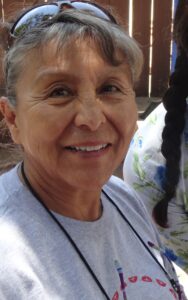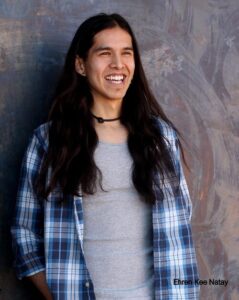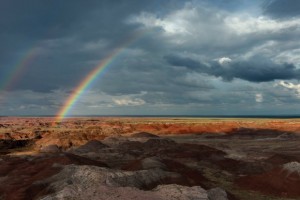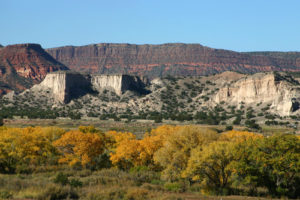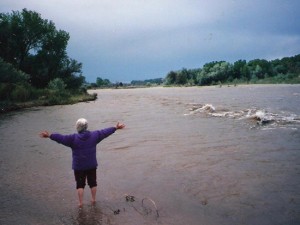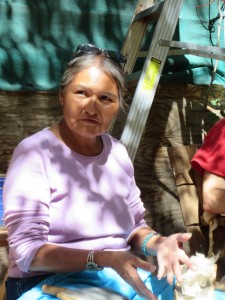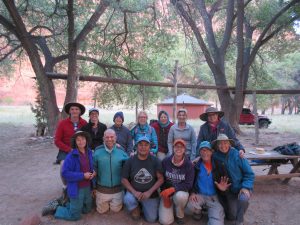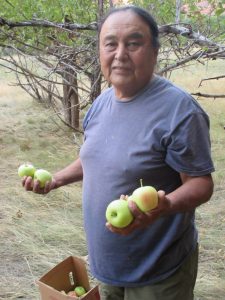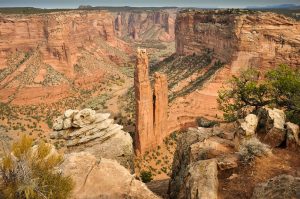 I was on a solo journey to Chaco Canyon August 11, 2012, taking a favorite walk from the Great Kiva Rinconada to the mesa above the kiva and the ancient site of Tsin Kletzin. The subterranean Great Kiva was once utilized for religious activities and ceremonies. It had 39-foot passageways from the underground structure to above ground levels. Casa Rinconada is one of the many buildings in the Chaco area that have documented astronomical alignments. Many know the Great Kiva for the archeoastronomy event that occurs on summer solstice. PBS video
I was on a solo journey to Chaco Canyon August 11, 2012, taking a favorite walk from the Great Kiva Rinconada to the mesa above the kiva and the ancient site of Tsin Kletzin. The subterranean Great Kiva was once utilized for religious activities and ceremonies. It had 39-foot passageways from the underground structure to above ground levels. Casa Rinconada is one of the many buildings in the Chaco area that have documented astronomical alignments. Many know the Great Kiva for the archeoastronomy event that occurs on summer solstice. PBS video
On the walk all was silent save for the wind, whipping around me in a deafening roar. Suddenly I encountered two large deer, or possibly elk. There were two farther on. How they survived in this harsh environment could be a lesson to us all in this time of global climate disaster. I felt blessed by their wild animal presence. Back in camp, I sat in mottled shade of the nearby low growing cliff bushes and created prayer sticks for friends facing challenges as well offerings to my home. Knees bent, “feet standing,” I silently wound colored yarn, feathers and other found objects into the sticks.
These “ofrendas” were a meditation practice given to me and others long ago at the LBGTQ Spirituality Gathering at Lama retreat center north of Taos, NM by Maria Elena. Maria Elena was of Mexican Huichol ancestry and had the gift of being a “dream healer.” She could enter into the dream world of a person and offer help and interpretation. As a young child in Los Angeles where her Mexican parents had immigrated, she occasionally found herself in that dream world, seemingly floating above her bed and having other unusual experiences. Experiences that her parents did not want her to have, as they had immigrated to the U.S. to forge a new and hopefully more prosperous life. So, they put her in parochial school to help her forget the old ways. But Spirit will have its way, no matter where we are. At school, Maria Elena said made friends with an African American maintenance man and together they went out to the desert and did prayer and ceremony, helping to further deepen her healing abilities. This secretive time in ceremony and prayer helped her make sense of her natural talents. Maria Elena said that if she had been living in her Huichol community in Mexico, the elders would have recognized her gift and taken her to be trained in the ways of their people. Fortunately for me and many others, she did not lose that gift and indeed was willing to share her healing ways.
The ofrendas had also become a part of my healing and prayer practice. As I sat there quietly making prayer sticks, slowly sliding out of the low bushes emerged a two-foot snake that just as quietly made her way under my legs, stopping briefly among the colored balls of yarn and feathers to give me a quick glance, then travel on her merry way. For some indigenous cultures, the snake is the most sacred of animals as it travels with its heartbeat closed to that of Mother Earth. I was both in awe and gratitude for this silent serpentine gift.
Earlier in the day driving into Chaco, the cell phone buzzed with a message from work at the public schools in Santa Fe. As I listened, I recoiled and contracted, wanting to be as far from an increasingly difficult work situation as possible. But soon thereafter I heard this interiorized message: “Say yes! to all that does not compromise you or your core values…keep your spirit shield firmly in place, beware delusional thinking, but do not contract in fear of change or letting go to new conditions or requirements or adaptations to the material world.” Perhaps this was the message the snake was giving me in advance of our special encounter.
And all it took was a quick wink.

